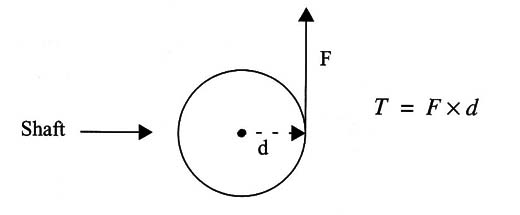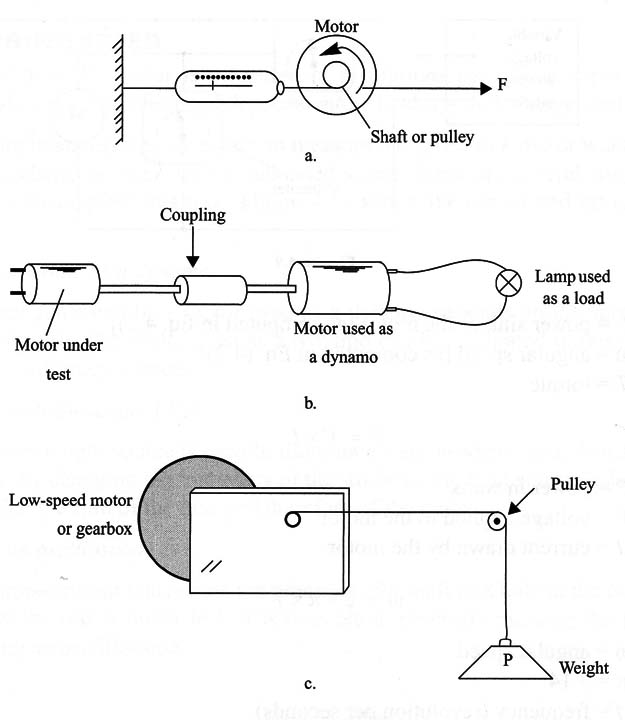Torque is defined as the product of the force times the distance from the center of the shaft of a motor, as shown in Fig. 1. When using a DC motor (or any other motor), the main information the designer needs is the torque rating. If this information is not available, you must determine it through experimentation.

Several simple techniques are suitable. Figure 2 shows some of the main techniques used to determine the torque of a DC motor.

a. Using a Prony brake dynamometer
Since torque changes with speed, by loading the shaft as shown in Fig. 2a and using a dynamometer, it is possible to determine the torque. Notice that the force to load the motor is given by the operator. A device to measure the speed can be coupled to the Shaft.
b. Using a dynamo (generator) as a load
You can load the motor under test using the same dynamometer arrangement shown in Fig. 2a but substituting a simple generator (the type used with bicycles is suitable for small DC motors). The load is controlled by changing the current supplied to a lamp using a rheostat or other external resistance. Small DC motors can replace the dynamo, since they can operate as generators as well.
c. Using a known weight
This technique is suitable only for low-speed motors (gearboxes), since the measurement is based on the time delay in the displacement of the weight.




